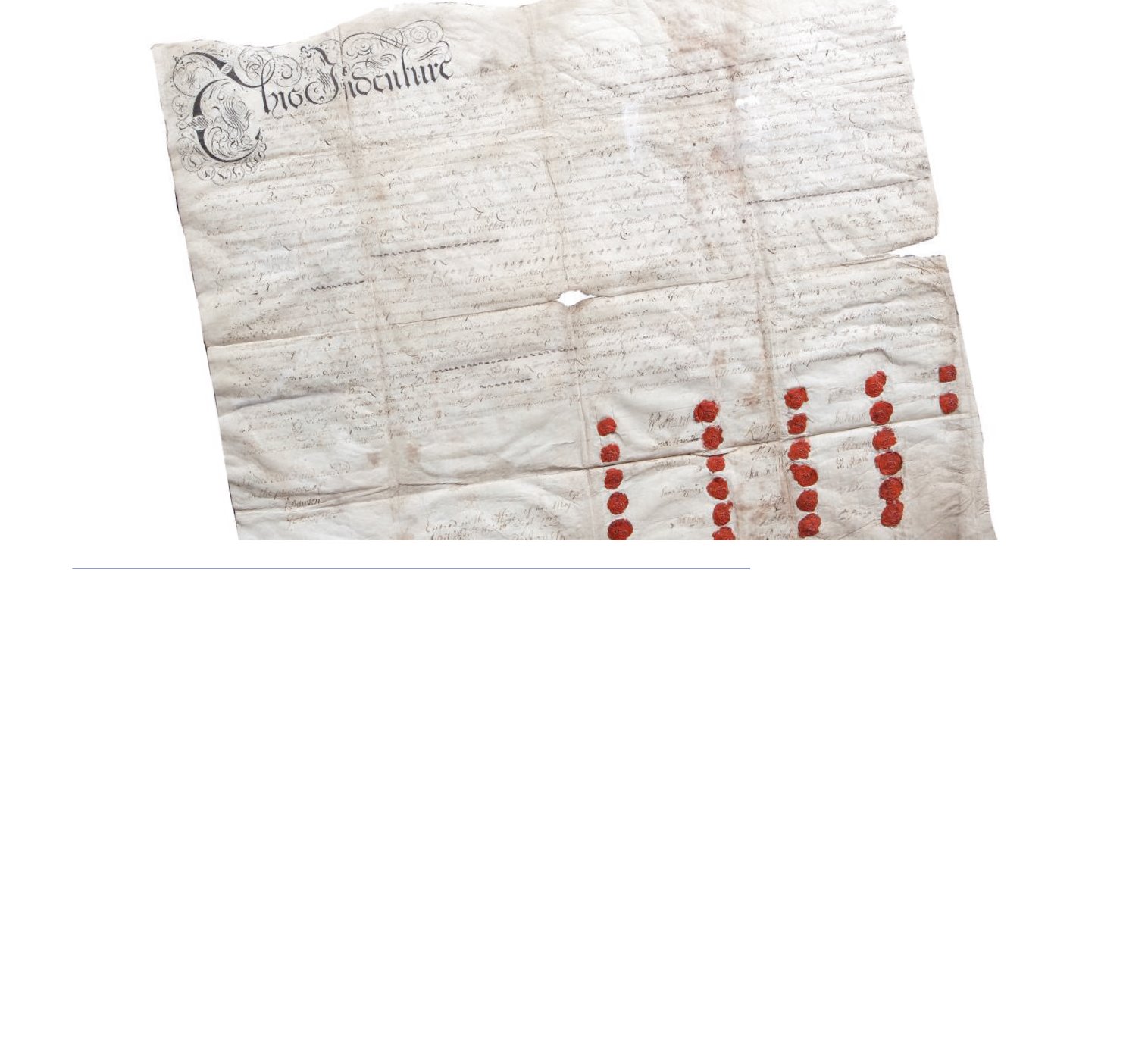

316
IRISH PRIVY COUNCIL DOCUMENT SIGNED 1713.
A unique manuscript on vellum, sized approximately 60 x 72 cm, written in a fine chancery hand, bearing the wax seals and signatures of twenty members of the Irish
Privy Council. Irish Privy Council documents of this nature from this time are exceedingly rare. The Privy Council was the instrument through which the Sovereign ruled.
It dealt with important matters of policy as well as routine administrative matters. Under Poyning’s law of 1494, a similar body had been established in Ireland. It had a
central role in all legislation and government. It increased in importance in the 18th Century. All its members were Protestant. They were a mixture of Church of Ireland
Bishops, noblemen and members of prominent families.
British policy towards Ireland was to maintain the connection between both countries and to ensure that Irish problems did not interfere with English interests. The
Penal Laws were the means by which the Irish were to be kept subservient - entry to Parliament, the professions, and important posts was denied to Catholics. The
most significant law was the Act to Prevent the Further Growth of Popery of 1704 which destroyed the Catholic gentry by almost eliminating the right to own, lease or
bequeath lands or property. The general effect of this policy and the confiscation from Jacobite supporters following the Battle of the Boyne was to reduce Catholic
lands to about five per cent of the total. The Privy Council was a major instrument in confirming or denying possession of land. This document demonstrates how the
process was formalised. 1713 was a time when lands were still being confiscated. This is a grant of 835 acres in Cork to John Davys, a protestant. He was possibly a
son of the Dean of Cork, Rowland Davies who had four sons. He was a strong supporter of King William and may have been seeking recognition for his backing.
The document was signed by the signatories named in the text, most honourable the Privy Council on behalf of her majesty. The Lord Lieutenant, then James, 2nd Duke
of Ormonde, was the titular head of the Privy Council. In his absence, the Lord Chancellor, Constantine Phipps, and the Bishop of Tuam are given first place as they
held the office of Lord Justices of Ireland. In 1711, tensions had exploded with the appointment of the abrasive Tory barrister, Phipps, as Lord Chancellor. He purged
the Judiciary and central government, nearly bringing the administration of the country to a halt. At that time the Irish Privy Council was a hotbed of Party and factional
strife. It was a Tory body under Queen Anne’s Tory Government in England, a fact reflected by the higher than usual number of bishops on the Council. The Tories were
a High Church, King and Country party. James Hamilton, 6th Earl of Abercorn, was a groom of the bedchamber of Charles ll. At the time of the Glorious Revolution,
he opposed James and was sent to Ireland to assist at the siege of Londonderry. Sir Richard Cox was lord Chief justice of the Court of Queen’s Bench. He fought with
William at the Boyne and was made Governor of Munster in 1692. All of the signatories were prominent individuals.
€2,000 - €3,000
Lot 316



















